Some people get nervous about sharing their process / techniques. I don't. Mostly because I use methods that do not give exact, reproducible results. Every screen I pull is different. Although years of experience do direct my work it is the serendipitous nature of breakdown printing that makes each piece of fabric unique.
Over the last few weeks I have been printing fabrics for a series of work inspired by those industrial structures that no longer really exist - brick kilns, pit winding wheels for example. I have been printing in one colour - grey - but some of the fabrics have picked up traces of rust from some of the metal objects I use to make my screens. I start by adding a small amount of thickened dye to the back of a screen. I spread the dye using brushes, foam brushes or rollers but leave the coverage rather uneven.
I then use my wonderful collection of 'things' to embed into the dye. I keep some screens specifically for use with metal brackets, buttons etc as over the years they have got rather rusty.
I use different size screens but in the winter, when the screens have to dry indoors, I make sure to only use a thin layer of thickened dye and to use small screens. I would rather clean and make up more screens than pull a screen where the dye has flowed into blobs before drying. Fellow breakdown printers will know what I mean!
Once the screens are completely dry I take off the embedded objects. And yes, I wash them every time. Sometimes I print the screen as is. Other times I use torn masking tape to create wells around the screen. Using torn masking tape breaks up the edge of each print. Having pinned my white, soda soaked fabric to my print bench I print the screen using thickened paste. As I want pale, delicate marks I tend to dump out unused paste if it picks up dye from the screen and replace with fresh paste.
I aim to apply different patterns / textures across the cloth so don't have to worry about composition. Using multiple screens means that I don't get too much pattern repeat. I let the fabric become touch dry before rolling up in plastic and leaving overnight to fix the dye. The fabrics are then washed and dried ready for the next process.



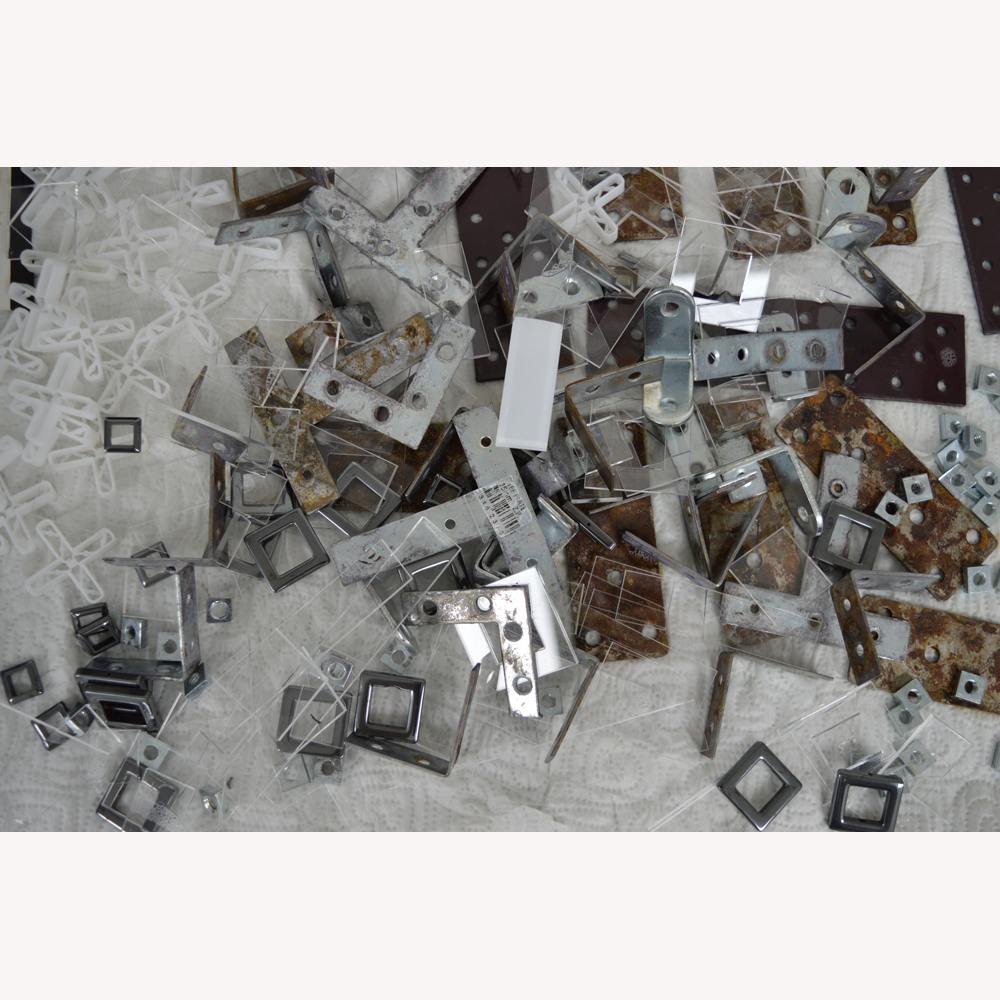
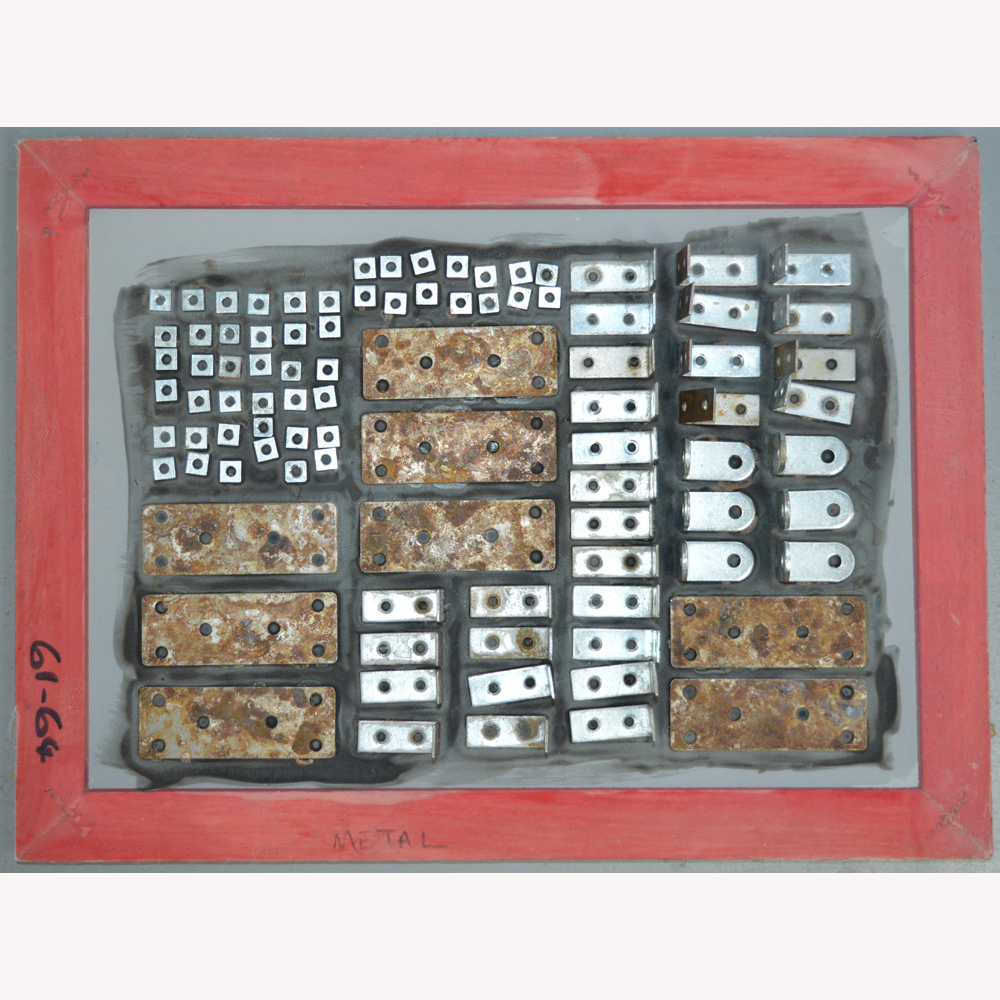
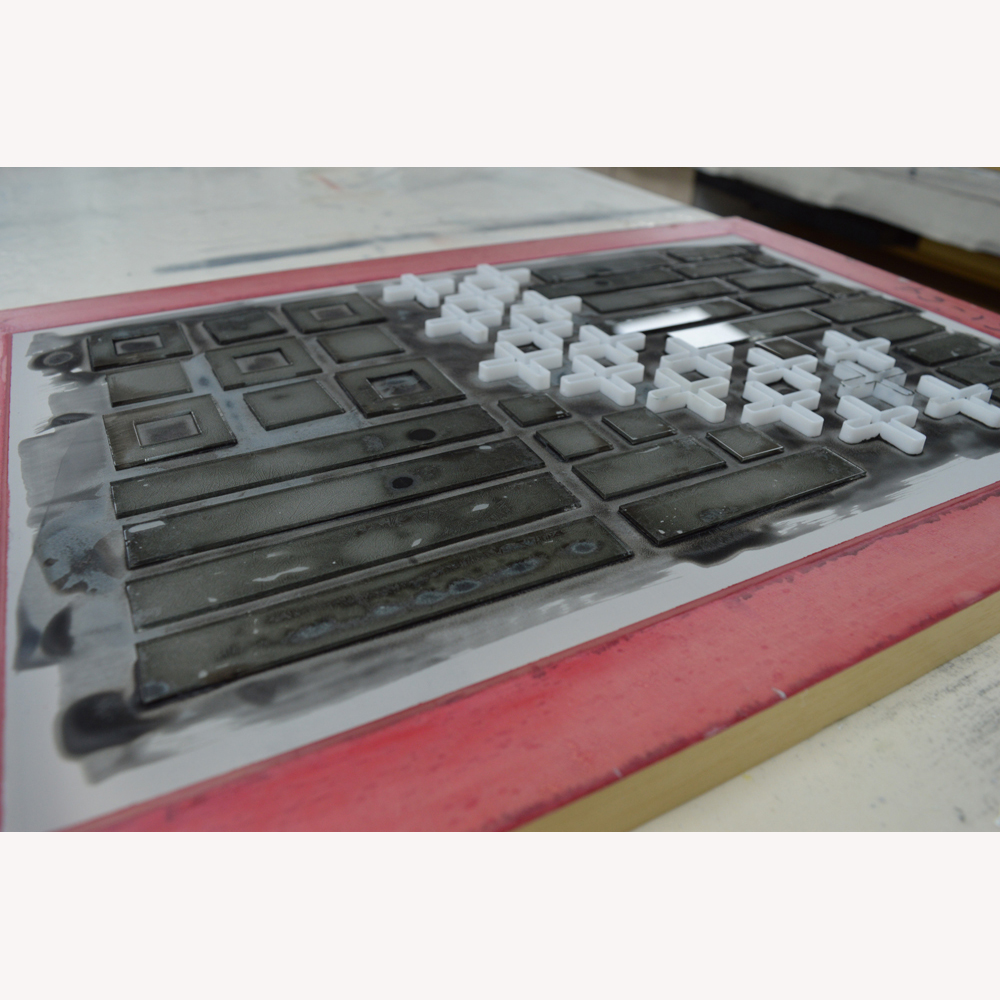
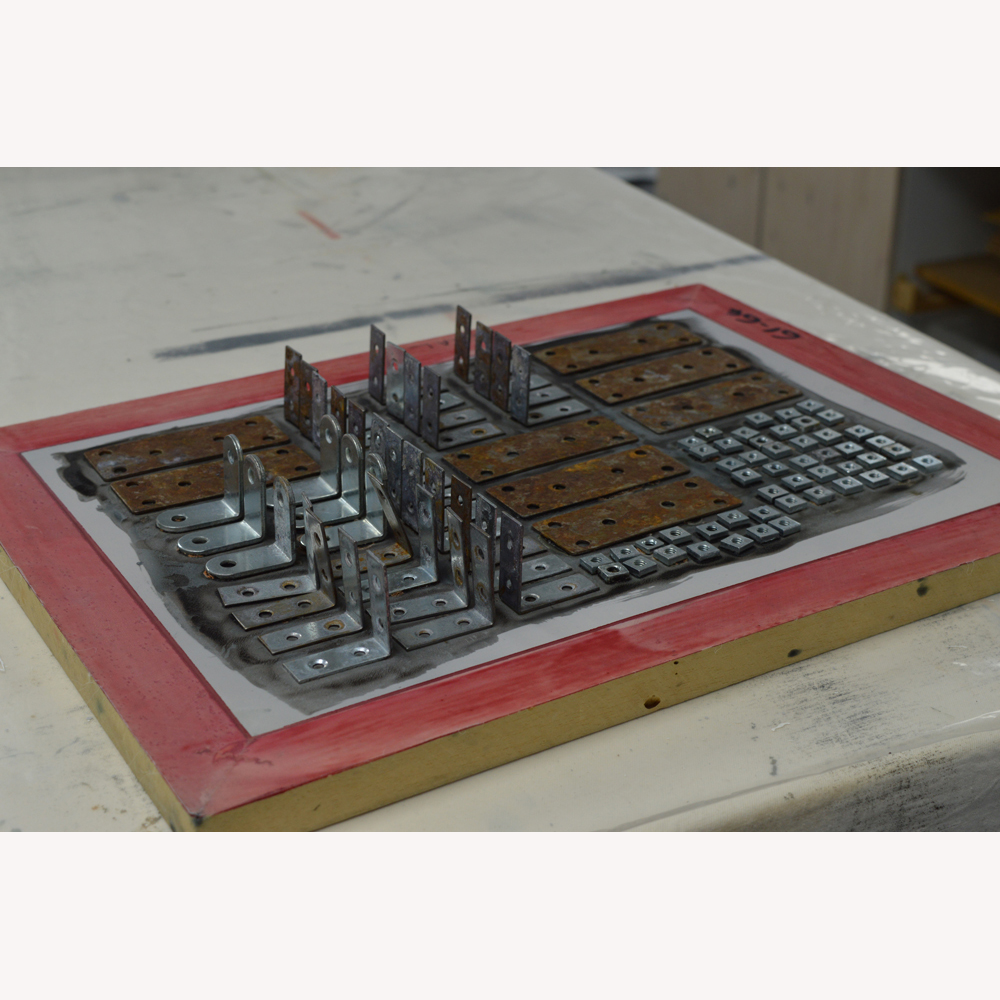




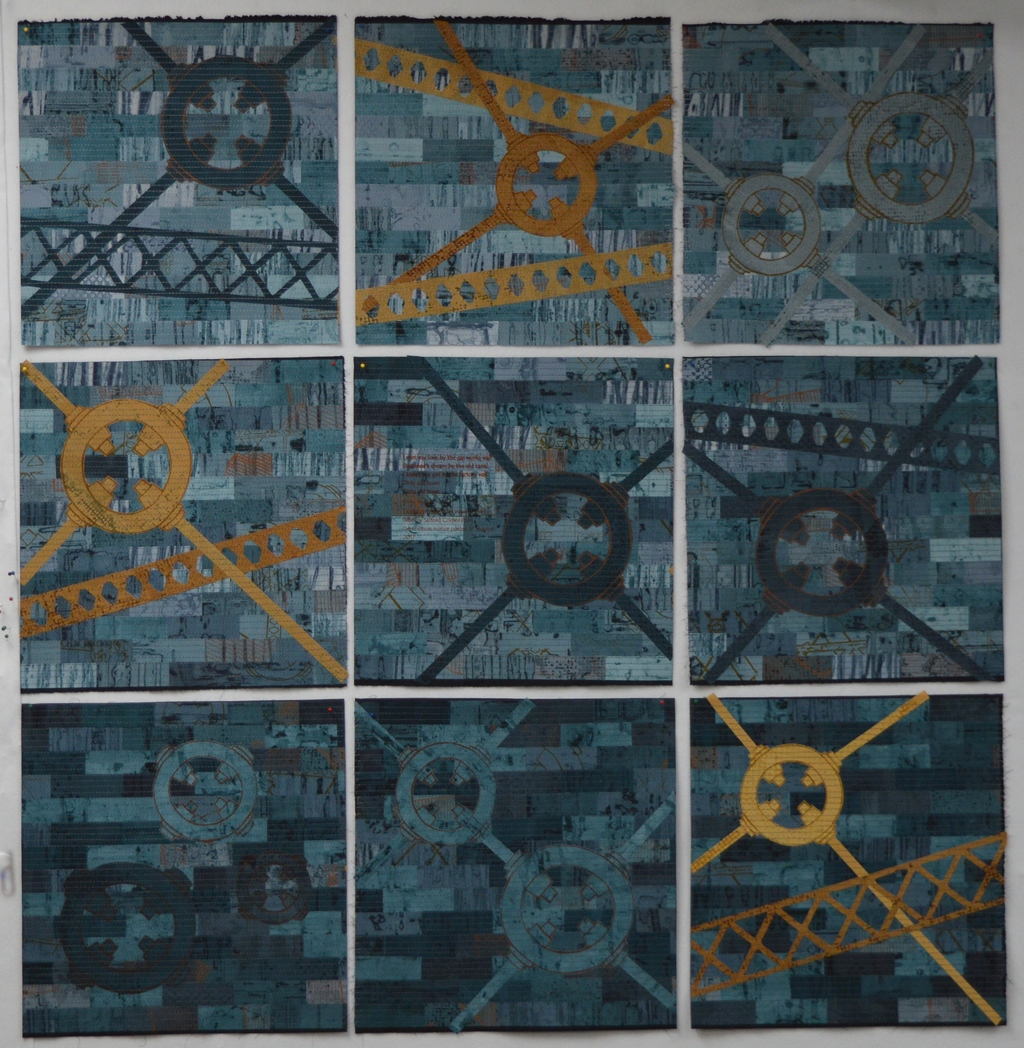 Those of you that follow my blog regularly will know that I made a very definite decision several years ago to always work in series. Doing so has helped me to develop as an artist - I spend a lot of time up front working on colour and on creating a palette of cloth but once I have that palette I am free to develop my ideas as I move from one piece to the next. And for my large pieces I do tend to get one to the finishing stages before starting work on the next. Many of my pieces are three metres wide or more. I am blessed with big print benches and a big design wall but it is not really practical to try to compose two large pieces at the same time.
Those of you that follow my blog regularly will know that I made a very definite decision several years ago to always work in series. Doing so has helped me to develop as an artist - I spend a lot of time up front working on colour and on creating a palette of cloth but once I have that palette I am free to develop my ideas as I move from one piece to the next. And for my large pieces I do tend to get one to the finishing stages before starting work on the next. Many of my pieces are three metres wide or more. I am blessed with big print benches and a big design wall but it is not really practical to try to compose two large pieces at the same time.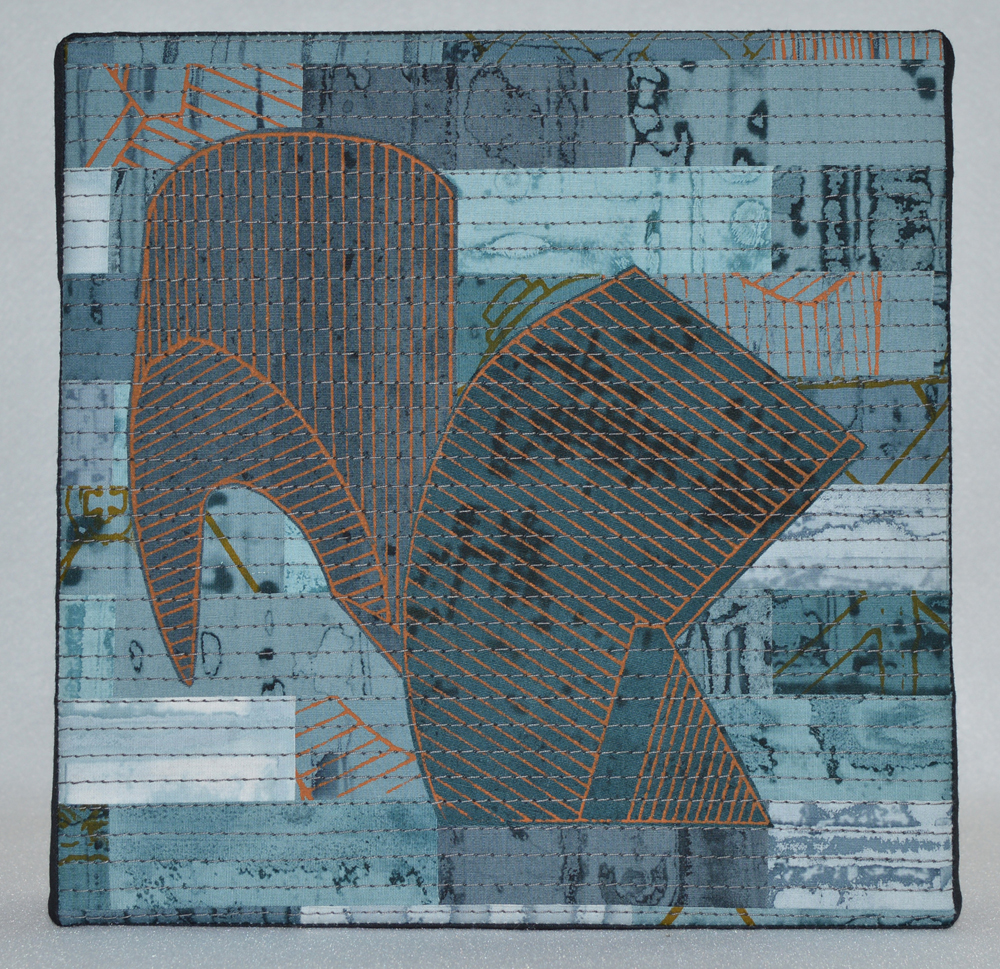 It is 4 weeks since I restarted my 100 (week) day challenge and time for an update. After completing 40 days I decided to take a two week break – family stuff plus Festival of Quilts made it pretty impossible to hit my target of spending two hours every week day evening working on small art. I was, and still am, absolutely determined to keep going however it has not been an easy 4 weeks.
It is 4 weeks since I restarted my 100 (week) day challenge and time for an update. After completing 40 days I decided to take a two week break – family stuff plus Festival of Quilts made it pretty impossible to hit my target of spending two hours every week day evening working on small art. I was, and still am, absolutely determined to keep going however it has not been an easy 4 weeks.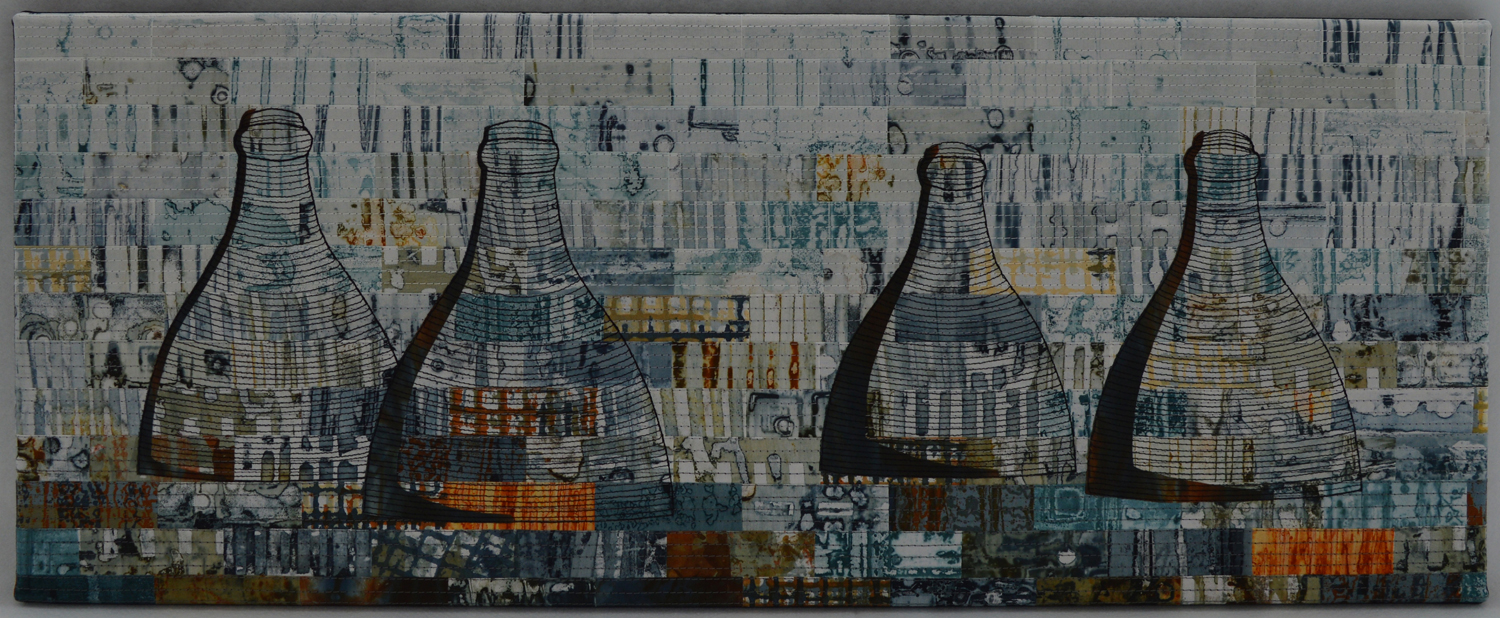
 It has been a quiet year for submitting work as everything I do is focussed on my two exhibitions in 2018 so it was very nice to be able to submit an older piece to Quilt-Art-Quilt. And even nicer to be selected! Ruins 1 will be travelling to Auburn, New York for the exhibition at the Schweinfurth Art Centre. Exhibition dates are 28th October to 7th January.
It has been a quiet year for submitting work as everything I do is focussed on my two exhibitions in 2018 so it was very nice to be able to submit an older piece to Quilt-Art-Quilt. And even nicer to be selected! Ruins 1 will be travelling to Auburn, New York for the exhibition at the Schweinfurth Art Centre. Exhibition dates are 28th October to 7th January.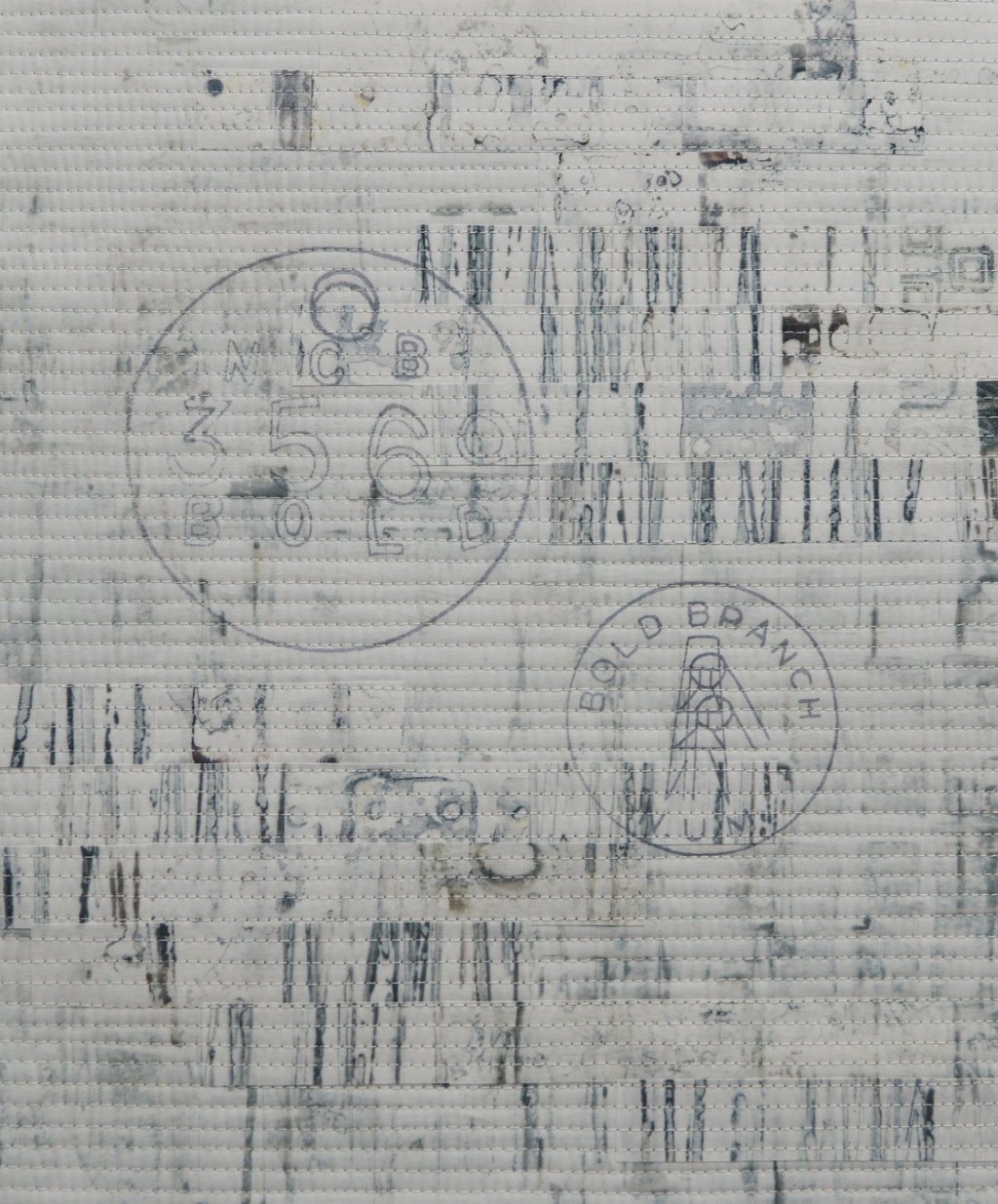 I've completed 35 days / 7 weeks of my challenge and I'm really happy with my output but it still feels like hard work making myself go to the studio some evenings.
I've completed 35 days / 7 weeks of my challenge and I'm really happy with my output but it still feels like hard work making myself go to the studio some evenings.
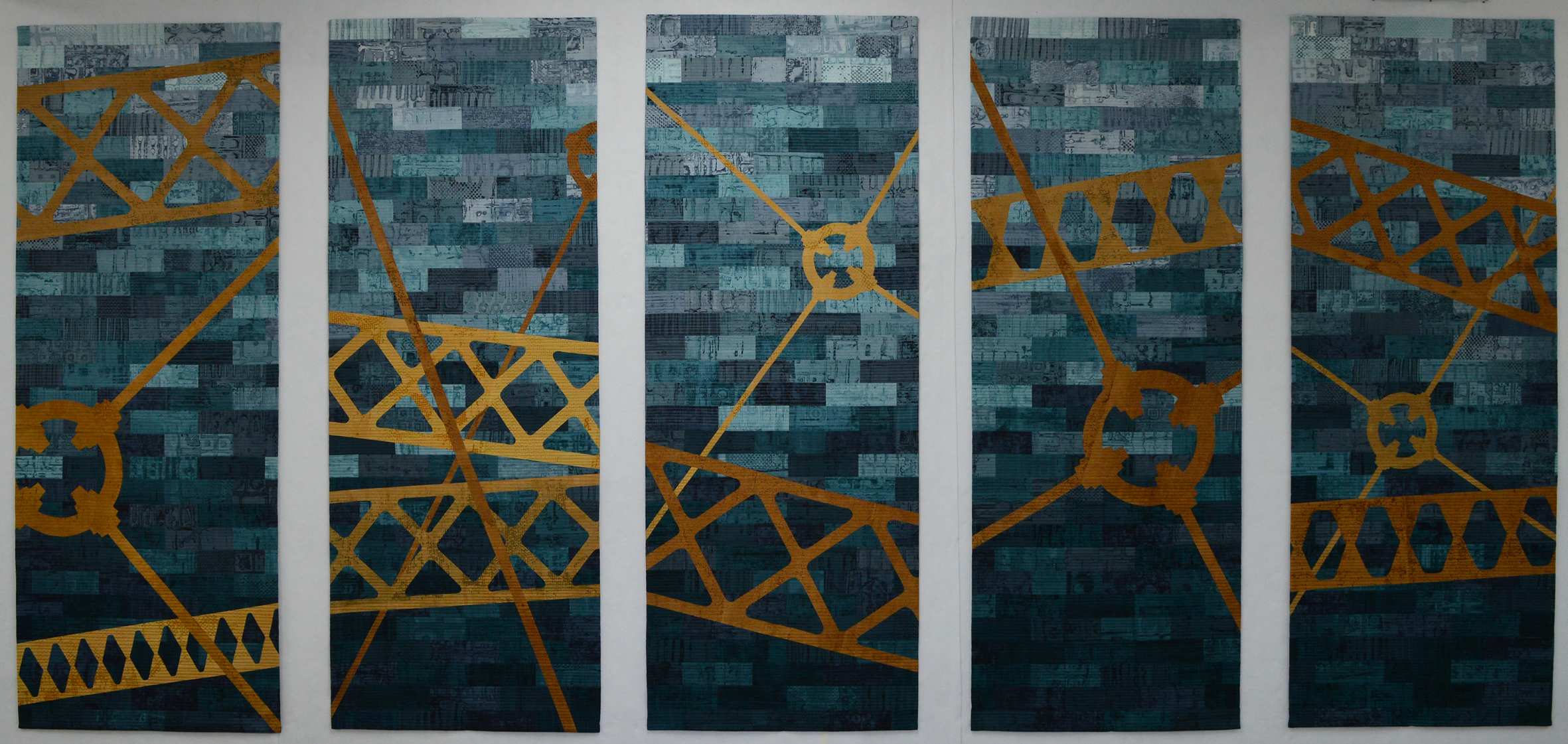

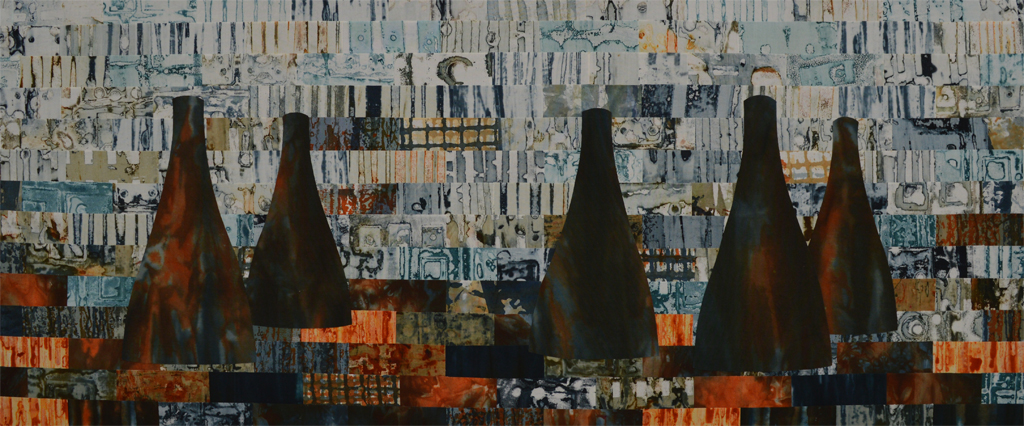 So what have I achieved after 20 days of my 100 (week) day challenge? The answer - an awful lot more than I was expecting. Albeit they still need stretching over canvas I have completed three 12x30 inch Kilns pieces with another one ready to stitch. I've also completed twelve 8x8inch pieces in a mini-series called Canal Street with another eight pieces ready to stitch. Wow!
So what have I achieved after 20 days of my 100 (week) day challenge? The answer - an awful lot more than I was expecting. Albeit they still need stretching over canvas I have completed three 12x30 inch Kilns pieces with another one ready to stitch. I've also completed twelve 8x8inch pieces in a mini-series called Canal Street with another eight pieces ready to stitch. Wow!